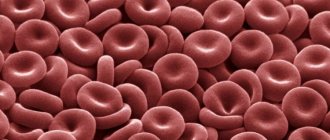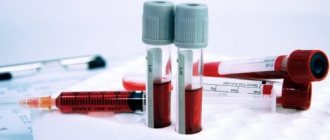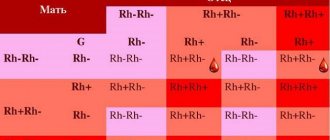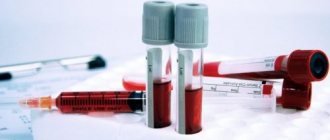Over the long history of its existence, humanity has been forced to adapt to the changing conditions of the earthly world. The person himself and his biochemical properties changed. In the modern world, it is known that people’s blood does not have the same Rh factor and group affiliation. The rarest of them is described in the article.
What is known
What is blood in general or rare blood - what is it? Blood is a special mobile tissue in a liquid state that connects the entire set of internal fluids, that is, it is plasma, and it contains leukocyte cells and red blood cells. Each blood has its own characteristics, including immunity.
Human bodies have different working resources, plasma has its own needs. The blood indicator is the Rh factor, that is, a special protein on the surface of red blood cells called erythrocytes. Rhesus is divided into positive with a sign (Rh(+)) and negative with a sign (Rh(–)).
Various processes can occur in the body; our most precious biological fluid reacts to each of them. The reaction is reflected in the results of human blood tests. Based on research and scientific data, tables are compiled so that people can compare their ideas with accurate information.
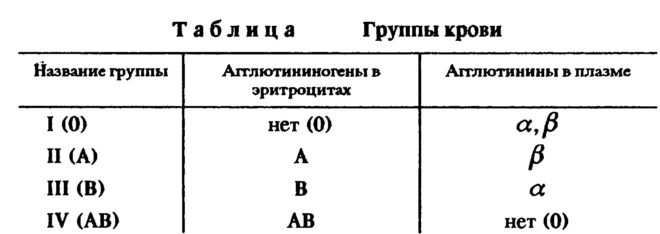
The tables contain symbols indicating the groups: I(0), II(A), III(B), IV(AB). Among the indicators there are rare ones, there is data on prevalence, each line provides certain knowledge.
The most common group in the world is the first; almost half of the inhabitants of planet Earth have such blood. Most Europeans are carriers of the second group, the third group is small, found in only 13% of earthlings.
The rarest in the world is the fourth. There are quite a lot of people with the first blood group with a negative Rh factor, for some reason the fourth Rh negative blood group is considered rare. The first two groups are recognized as the most common, the third is less common, but the rarest is the fourth negative. Of all the varieties, it has become the rarest species, the most mysterious. A small number of earthly inhabitants were lucky enough to become owners of the fourth group. This means that this is the rarest blood group in humans. A conditional rating was formed based on the demand for all known types of blood transfusions. Each type differs from the others in its resistance or susceptibility to different diseases.
What are the types of blood: classification of blood group by rarity
As already mentioned, there are currently only four types of blood flow. They all have certain differences in their biochemical composition. This was proven a thousand years ago. The main types of blood flow are designated by letters and Roman numerals. It looks like this: I (0), II (A), III (B), IV (AB).

Rare type of blood flow
The most popular and numerous blood carriers are people with type I (+) blood flow. There are only 46 percent of them on earth. Less numerous is the second (+). In total, there are about 34 percent of such carriers, mostly Europeans. The third (+) occurs in only 13 percent of people on earth.
About the rarest blood group
In the twentieth century, many scientific discoveries occurred, among them the conditional classification of blood into groups. This was a good advancement in medicine, especially in emergency cases of saving people. Bleeding is a very life-threatening situation. The discovery made it possible to find donors and prevent unnecessary mixing of blood, thereby saving many, many human lives. As it turned out later, in nature there are different subtypes of blood, explained by the presence of Rh factors. It turned out that among all the groups there is the rarest group IV. The types differ in the content of agglutinogen proteins on the surface of red blood cells.
People need to know where they belong. To the question, what is the rarest blood group, there is a simple answer - IV(-), phenomenal. And the first negative is inherent in 15% of Europeans, about 7% of Africans and is almost absent among Indians. Science continues its research on these topics.
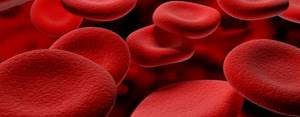
Why is group 4 singled out?
About two millennia ago, a new amazing sign of blood was formed. Then it turned out that this is the rarest group. The exclusivity lies in combining into one whole the complete opposites of blood type - A and B. But it is the most needed at all blood transfusion stations. Scientists have noticed that the owners of this phenomenon are endowed with a flexible system of protecting the body from diseases (immune).
Modern biology considers this group complex, which appeared not under the influence of the environment, but as a result of the mixing of people of different religious denominations or belonging to different racial communities. In addition, IV is inherited only in half of the cases when both parents have such blood. If one parent has type AB, then there is only a 25% chance that children will be born with this group. The antigens present affect its properties in different ways, sometimes similarities with the second appear, sometimes signs of the third are noticeable. And sometimes this rare group demonstrates a peculiar combination of both groups.
There are some conclusions regarding the characteristics, indicators of characteristic features, and health status. For example, people with a rare group are less adapted to prolonged physical activity. It is advisable to replace burdensome sports activities with light, acceptable yoga. The psychological characteristics of these people are manifested in nobility, sincerity, composure and calmness. They show more of their spiritual organization in creativity.
Which blood type is the most common and best for health?
Based on established statistical data, the most common type of blood flow in people on the globe is the first (+). And it is practically universal - suitable for all other types of blood flow. If we judge how the type and rhesus influence the health of people, then there is no scientifically proven data yet, there are only observations.
Thus, women with negative Rh are more likely to fail to preserve their fetus during pregnancy than women with positive Rh. These expectant mothers should under no circumstances have an abortion during their first pregnancy, otherwise you may later lose the opportunity to have a baby forever.
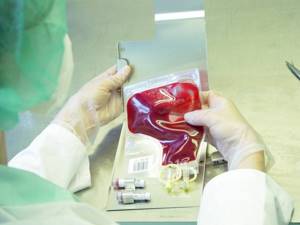
Most common blood group
Many people are interested in what blood is the best for health? Medical experts believe that I (+) has advantages over other types of blood flow in humans in all its qualities. After all, it has universal characteristics and is ideal for almost all other patients with Rh (+). Other descriptions of other types of blood flow are just facts and observations without any confirmation from scientists.
- People with group I have pronounced characteristics of leaders, they have excellent health, and they very rarely suffer from colds. However, they are characterized by pathologies such as gastritis and ulcers. And despite the activity of people with such blood flow, they react poorly to moving and changing climatic conditions.
- Owners of group II are less active, but do not get lost when the situation changes. Among these individuals there are often talents with leadership qualities. They are characterized by thyroid diseases, cholecystitis, gastritis and colds.
- The population with group III are lovers of home comfort and do not like fuss at all. Always choose a profession with calm working conditions. They are characterized by neurosis, because they often lose their balance in stressful situations. Already at a young age, patients are prone to hypertension, pathologies of the heart and blood vessels.
- Persons with type IV blood flow have sociable qualities and easily adapt to a new place. Diseases inherent in them are diseases of the cardiac system, thromboembolism, etc.
Most common
There is a group in nature that is much more common than the fourth. This is the first one, it is called universal. The rest are placed somehow in order of priority. About half the population has it. However, such statistics are relative and approximate. The fact is that each nationality has specific characteristics according to groups and Rh factor; it is believed that this phenomenon is associated with heredity.
The first is not only the most common, but also the most, one might say, universal. If during transfusion it is necessary to carefully approach the combination of blood groups, then the first one is suitable for all patients, regardless of their group affiliation. This versatility is explained by the absence of antigens; this is confirmed by the marking number 0.

What blood is most common?
A large proportion of the population of planet Earth are carriers of blood with a positive Rh factor, this is 85% of all people. And in the blood of the remaining 15% there is no Rh factor, which gives the right to call their blood negative.
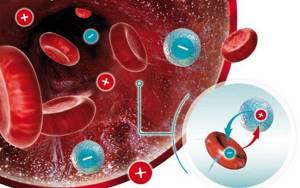
Blood group statistics around the world are distributed as follows:
- The first is 45%.
- The second is 35%.
- Third – 13%.
- Fourth – 7%
World distribution statistics
There are about 3 dozen varieties of blood groups known in the world. In our country, the classifier of the Czech scientist Jan Jansky is used, according to which liquid tissue is divided into 4 groups. The classification is based on the presence of antigens (substances foreign to the body) on the surface of red cells - erythrocytes.
Separation occurs according to the ABO system: • I (0) – absence of antigens; • II (A) – antigen A is present; • III (B) – antigen B is present; • IV (AB) – antigens A and B are present.
Statistics show the prevalence of people by blood type:
| Blood type | Found in the population |
| (I) 0 + | 40% |
| (I) 0 | 7% |
| (II) A+ | 33% |
| (II) A – | 6% |
| (III) B + | 8% |
| (III) B – | 2% |
| (IV) AB + | 3% |
| (IV) AB – | 1% |
This shows that the percentage of people with blood group 4 is the smallest. In emergency cases, group affiliation marks in a passport or military ID can help. The rarest blood group in the world is IV. The child inherits 50% of the group from his parents. Regarding Rh, Rh is individual compatibility. It is very important for the conception and development of a child that these indicators coincide in both parents. Often miscarriages during pregnancy occur for precisely these reasons.
Distribution table in Russia
The distribution and occurrence of various groups of the AB0 system varies among individual peoples, and this is influenced by the frequency of occurrence of phenotypes.
In the Central European population, blood groups were distributed as follows:
- 0 (first) - 43%,
- A (second) - 42%,
- B (third) - 11%,
- AB (fourth) - 4%.
Thus, we can conclude that in Europe the most common is the first group, and the least common are people with the fourth group.
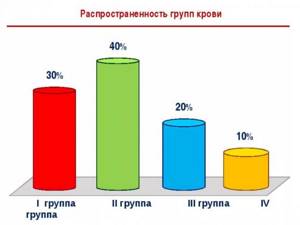
If you move geographically towards eastern countries, you will notice a pattern: agglutinogen A will be found less and less often, but agglutinogen B will become more and more common.
In the Russian Federation, the prevalence of blood groups according to the ABO system can be presented in the form of a table (in percentage):
| First (0) | Second (A) | Third (B) | Fourth (AB) |
| 33% | 38% | 21% | 8% |
That is, in Russia, the majority of citizens are carriers of the second group, but the fourth group still remains the rarest.
Transplantation and manipulation features
Often people find themselves in extreme situations when acute blood loss poses a real threat to life. The main indication is blood transfusion, and this is a very serious, responsible manipulation. This complex action has its own characteristics and characteristics. This requires strict adherence to the rules approved for such cases and highly qualified specialists. The rules for conducting a kind of operation without incisions on the patient’s skin are strict and provide for these manipulations in a hospital setting in order to instantly respond to all kinds of reactions or complications. If possible, medical professionals try to find a life-saving method without such a procedure.
The reasons for performing a transplant from a donor to a patient may be:
- heavy bleeding;
- state of shock;
- prolonged bleeding, including during complex surgical operations;
- low hemoglobin content in severe anemia;
- deviations in the processes of blood formation.
During a transfusion, the patient's health is directly dependent on the coincidence of group affiliation and the Rh factor. Rh mismatch leads to death. The universal groups are I and IV.
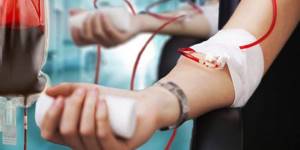
In the human community, the phenomenon of voluntary donation of blood or its components is widely practiced. For donation, people all over the world donate their biological tissues. Donor material is used for scientific, research, and educational purposes; medicines are produced from it. It is also needed for emergency transfusion. The effect is achieved only with complete compatibility of the blood of the donor and the subject receiving assistance. This must be a group match, according to Rhesus, and also individual compatibility.
Thus, human blood represents a mysterious natural phenomenon with which the very existence of man and his characteristic features are connected. This living organism exhibits wonderful properties that have not yet been fully studied. Scientists continue to find answers, but there is a lot of interesting work ahead that requires attention and full dedication.


